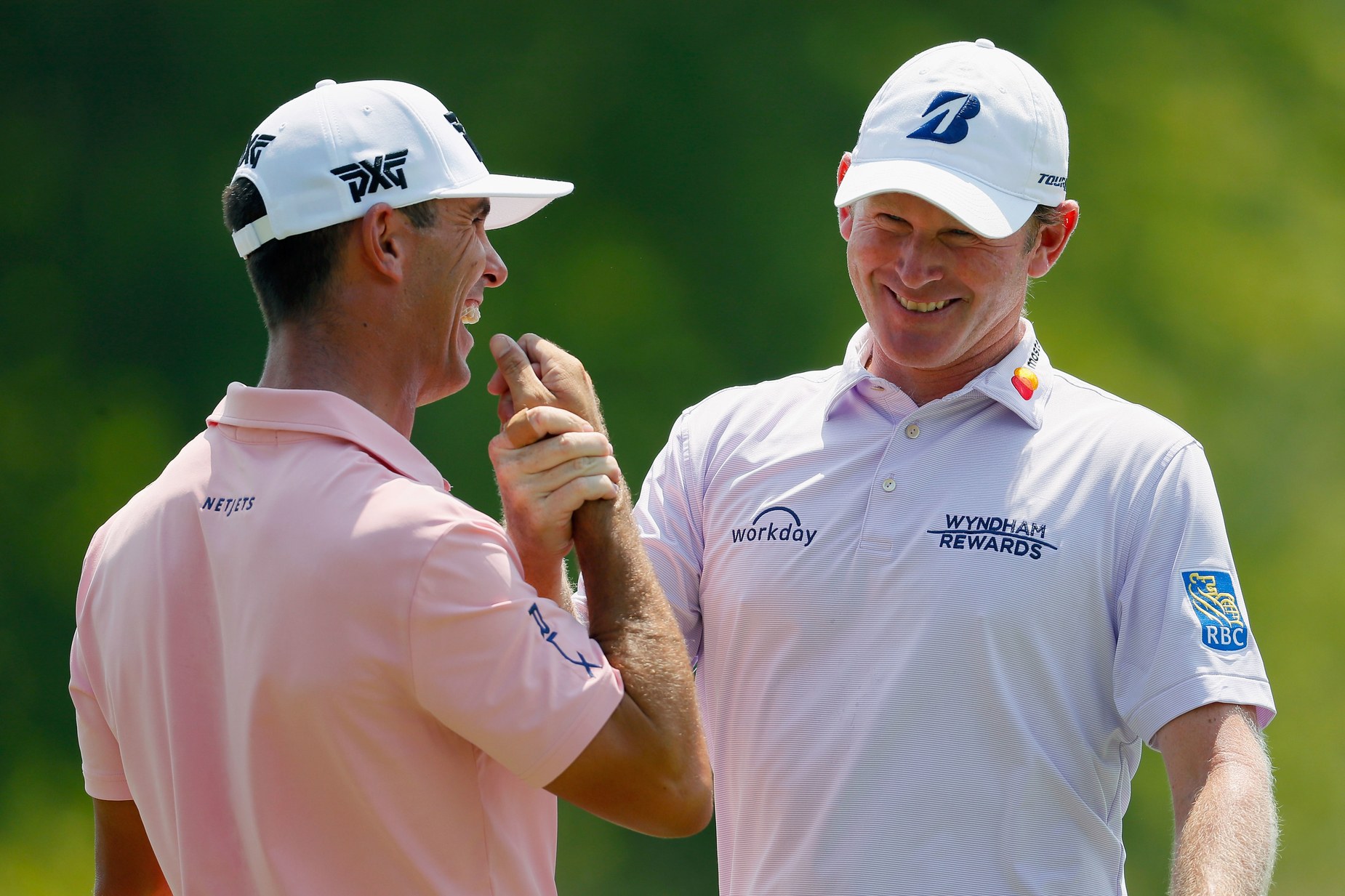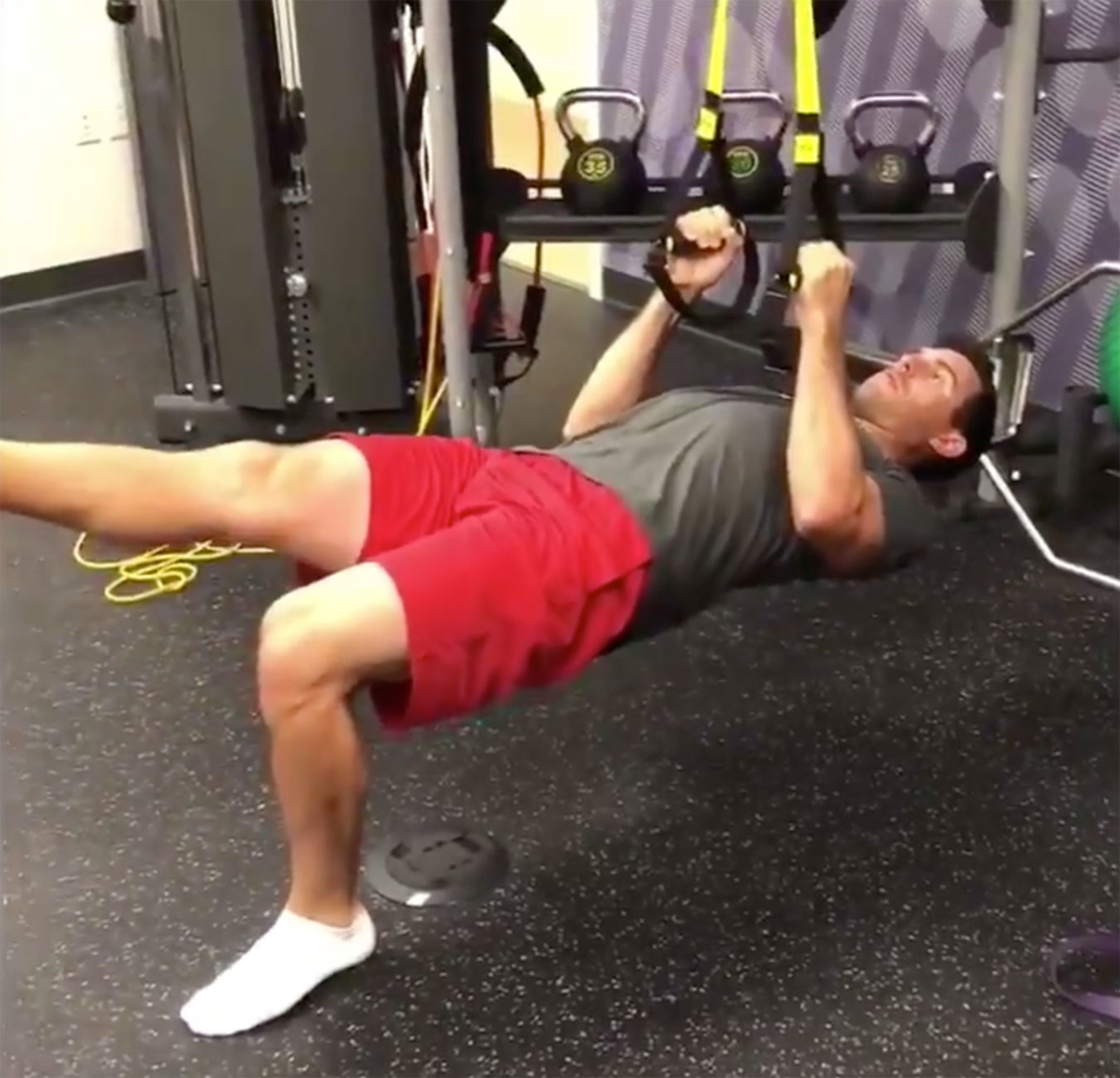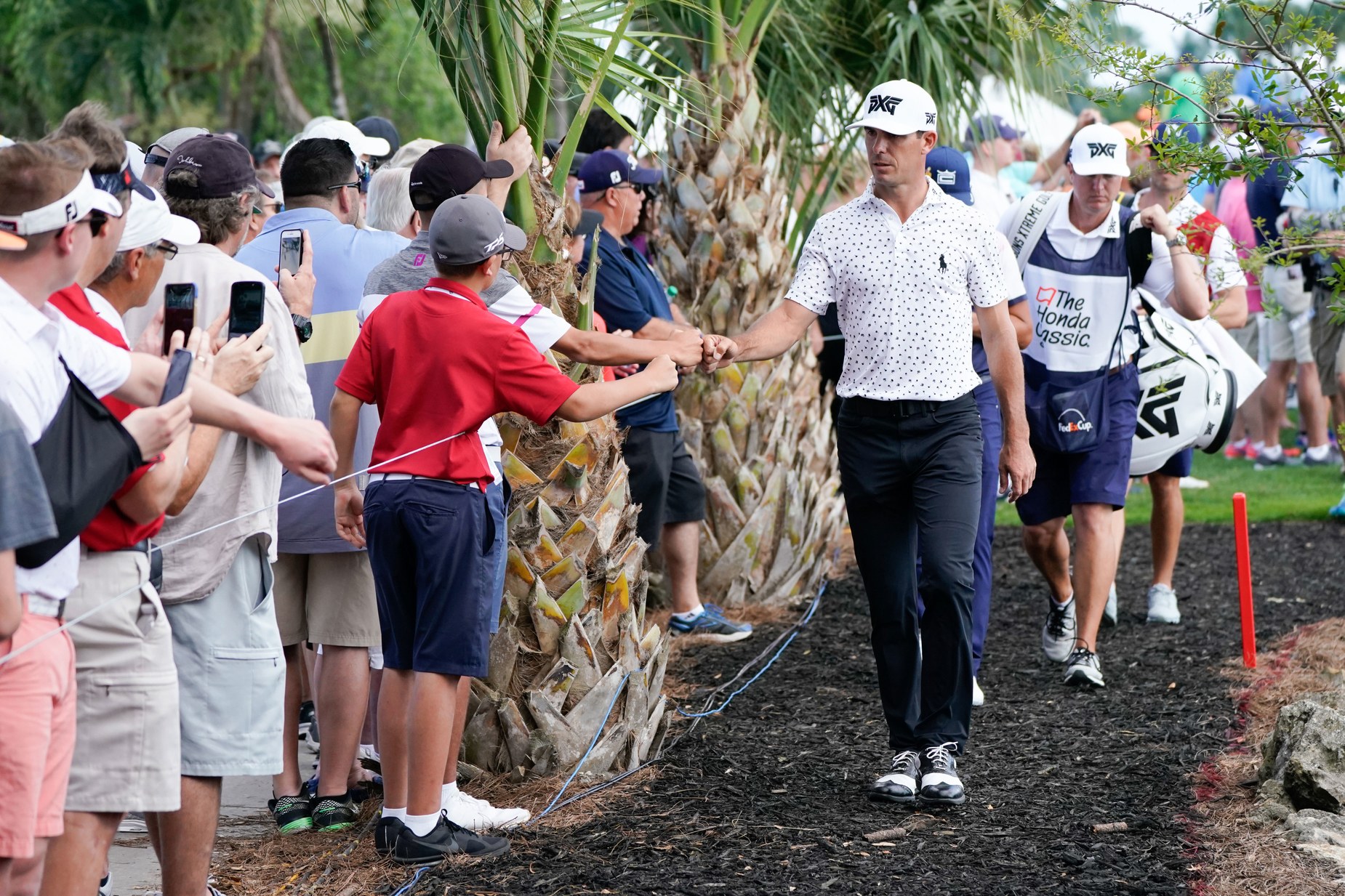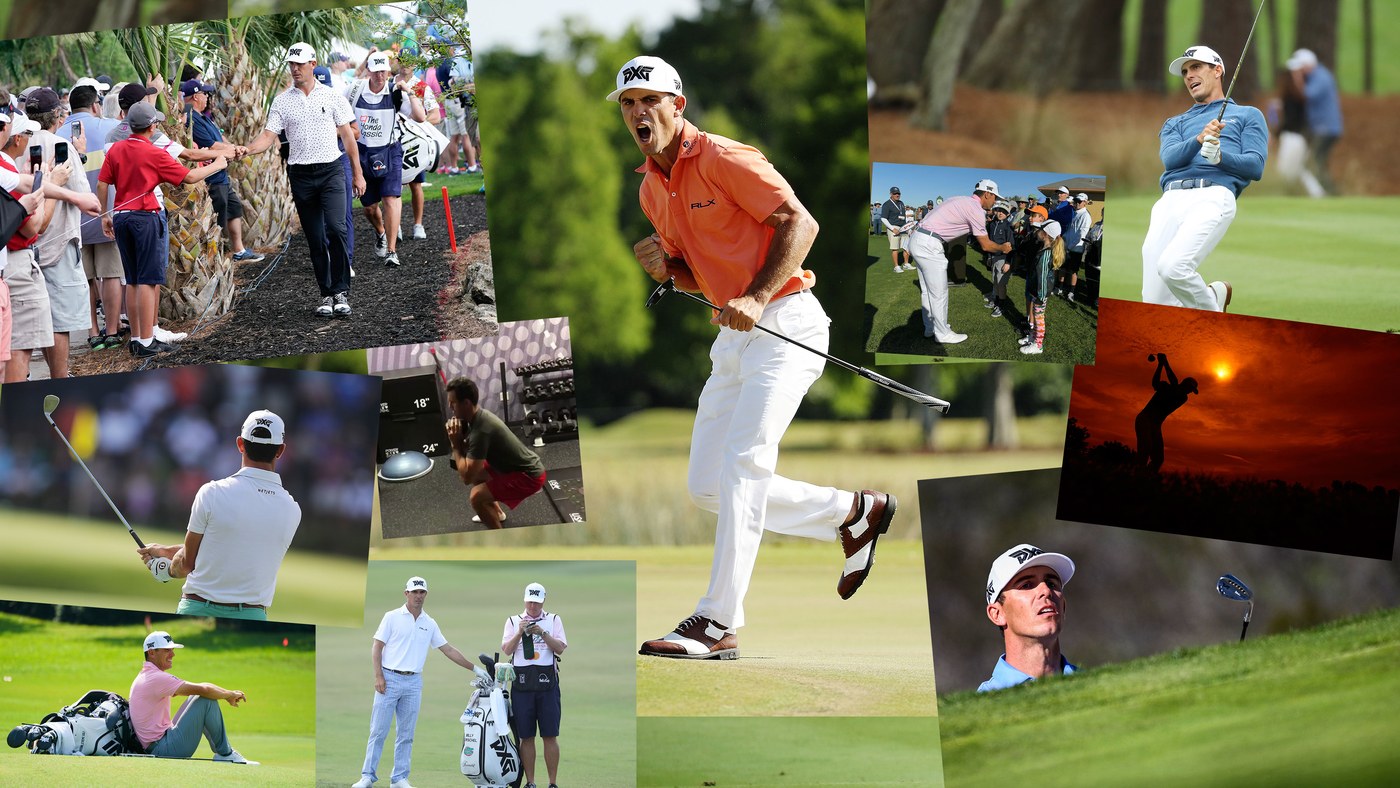We see them competing Thursday through Sunday, but what do tour pros do the rest of the time they’re at a tournament? Billy Horschel shows us it’s not quite as glamorous as you might think
By Brian Wacker
Billy Horschel is a fountain of energy. He talks fast, walks fast and can’t help himself when it comes to Twitter. He’s a human can of Red Bull. These are not necessarily good traits for a golfer, but he’s done OK. Horschel has won five times on the PGA Tour after an impressive college career at the University of Florida, and in 2014 captured the FedEx Cup.
At 32, and in his ninth season on tour, the Ponte Vedra Beach, Fla., resident is also a creature of habit and has the rhythm of life as a professional golfer down. What’s a typical week like for a PGA Tour player? Most fans only see the shots Thursday through Sunday, but there’s a lot more going on than meets the eye. So he gave us a peek.
Monday
This is when most of us are flying into town, except when you’re coming from another tournament on Sunday night or flying somewhere really far when you might get in a day or two earlier. The extra day of rest and to catch up on personal things is important because this is really the only “off” day I’ll have. The only time I will go to the course on a Monday is at a major, the Players and sometimes a World Golf Championship event. The WGC-Dell Match Play was one of those cases because the tournament started on Wednesday, so I flew into Texas late Monday morning, had lunch at the course and played nine holes with Brandt Snedeker.
My wife, Brittany, and our three children don’t often come on the road with me, maybe a handful of times a year. It’s a lot to ask them to travel as much as I’m on the road (the kids are 5, 2 and 3 months old now, too, so it’s a lot of work). Earlier in my career, I used to fly private most weeks, but since my family doesn’t travel nearly as much as they once did, I only do it 15-20 percent of the time now. At $5,000 an hour, it’s also expensive, and most weeks I don’t need it anyway. Delta is my “private” airline, and I share it with lots of my friends.
Tuesday
One thing I have figured out is that if you look at all the best players in the world, they are relentless with their routine. I’ve always had a routine even going back to my days in college at Florida, but it took about six or seven years out here to find what worked best for me and refine it through some trial and error.
Most weeks I’m up by 6 or 6:30 at the latest—I can’t sleep in anymore even if I try. Before I even get to the course, I’ve already been to the gym for an hour, with my workout focused on getting the muscles loose, core strengthening and flexibility. Fitness is something I’ve really taken seriously the last handful of years, especially as I’ve gotten older. We hit so many balls and have such long days, it’s helped me stay healthy. I’m only 32, but I feel more aches pains every day.
Once I’m at the course, breakfast is pretty simple: orange juice, oatmeal, yogurt and granola, fruit, a banana, and one piece of toast with peanut butter. I used to have eggs but found out that I have a moderate allergy, so I don’t eat them anymore. Then it’s time to practice.

Kevin C. Cox/Getty Images
Horschel often plays practice rounds with Brandt Snedeker, the duo sharing the same swing coach and stats guru.
Typically, I’ll text another player the night before to see if they want to play a practice round together. Sometimes I’ll run into a guy in the locker room and ask if they’re playing. Sneds and Webb Simpson are two guys who I play with a lot. Since Sneds and I have the same swing coach (Todd Anderson) and same stats guy (Mark Horton), we’ll play little games against each other on the course—mostly chipping or putting contests for a little extra something. Whatever the data says we need to work on the most. Unfortunately, I’m behind on the ledger because he’s been kicking my butt lately, but having competitions against each other has been really beneficial in sharpening my game and focus. Plus, it’s more fun that way.
The majority of the time we’ve played these courses so much, the rest of the round is just about seeing it in its current conditions. I might also be working on certain things in my swing to fit that course. It’s easy to hit every kind of shot you want on the range, but nothing can replicate having one ball and having to hit a shot on call on the golf course, especially with a little cash on the line.
Afterward, I’ll have lunch, hit balls for another 30-40 minutes then putt for 30-40 minutes and call it a day. Before I leave the course, I’ll see my physio (Alex Bennett) and spend another 30 minutes getting worked on and stretched out. It’s something I’ve done more of, again, as I’ve gotten older.
Wednesday
Wednesdays are pro-am days. The rounds can be long, but they’re important for us and the tour, and it’s the same routine for me before and after the round. Once I’m playing, though, I try to spend the first four or five holes focusing my energy on the amateurs, getting to know them, chit-chat, giving tips.
The next handful of holes I’m focusing on whatever I’m working on with my swing. Right now, it’s trying not to over-turn in my backswing. When I do, I lose consistency in my ball-striking, which is something that has always been a strength of my game. The feeling I’m trying to capture is that my backswing is driven by my arms rather than with my body. It’s weird because it feels like I have no power, but by not over-turning in my backswing I’m still able to generate power, just in a little different way. It’s helping me be more consistent, which is the goal.

Harry How/Getty Images
Horschel spends a good amount of time at the range each day, fine-tuning his swing, sometimes under the eye of swing coach Todd Anderson.
At the end of the round, though, the day is far from over. After the pro-am, I’ll again hit balls for 30-40 minutes and chip and putt for another 30 on top of that. Here’s it’s just fine-tuning things so that we’re all set for Thursday.
Once I’m back to the hotel, I’ll get some dinner, watch TV and then it’s zzzz. The goal is to go to sleep by 10. A lot of guys will go out every night, but that’s never been me. I’ll go out maybe two or three times during the week, maybe grab dinner with Sneds or Scott Piercy, another good buddy of mine out here, and just order room service or pick up dinner the other nights. That also allows me time to catch up with my family via Facetime, but that’s usually quick. We get to the point in a few minutes, and it’s done. We’re not on our phones like teenagers. But the time I spend not thinking about golf, I’ve figured out as I’ve gotten older, has been better for my mind and has had an impact on my game. Like I said, you can over-do it out here.
The rest of the time I watch a ton of TV, especially sports. I have 15-20 shows that I keep up with on a regular basis and watch on Netflix or iTunes. Everything else is mindless TV so I can check stuff out on the Internet and get in Twitter debates. Social media is entertaining, but it’s also something I’ve done less of the last year and am working on doing less of period. It’s just a time suck, and I need a break from it because it’s not really helping anything when it comes to what I’m out here trying to accomplish. My goal this year is to read a few more books when I’m in the hotel room.
Thursday through Sunday
Once the tournament starts, I’m the same creature of habit. If I’m in the morning wave, I wake up 3 hours and 15 minutes to 3½ hours before my tee time and arrive at the course 2½ hours to 2 hours and 45 minutes before I’m scheduled to go off. I don’t really have a preference on tee times, but if I’m going late-early the first two days, I’m usually only getting four or five hours of sleep between rounds because by the time I get back to my hotel and fall asleep it’s late.
The first stop at the course is the fitness trailer to warm up, get the blood flowing, warm up my muscles and get them activated. Yes, activated. They need to be ready to fire to make a proper golf swing. Then it’s off to breakfast in player dining for about 30 minutes.
Next, I start my warm up an hour and 15 minutes to a 1½ hours before my tee time. I do a longer warm up than most players—anywhere between 30-45 minutes longer. I could warm up in 45 minutes like everyone else, but I don’t like to feel rushed. I move quickly enough as it is, so slowing down and taking my time helps me focus.
If I’m not playing until the afternoon, I try to do a little workout in the morning—nothing too crazy, just enough to get things moving. I get to the course the same amount of time before my round and go through the same routine. If I’m playing late on the weekend, lunch before the round is usually a sandwich or some chicken and vegetables. I’ve always had a routine, and just sort of figure it out on my own over time to what works best.

Twitter.com/BillyHo_Golf
Horschel spends part of nearly every day working with his physio to get his body ready to play.
Like with the pro-am, my day isn’t over after the round, either. I’d say 98 percent of the time, I do around 30 minutes of practice after my round, no matter how I played. It’s something I have always done because I guess in my head that if I didn’t do something after the round and come out the next day, I’d feel like I should have hit a few balls. I like to have my swing ingrained in my mind. It’s a comfort factor for me and makes me feel like I’m checking off the boxes of what I need to do.
It’s tough for me to say that I over-practiced early in my career because I’ve always been a guy who believes in practicing a lot, but after about seven years I figured out the benefits aren’t always there. I’m in my 10th year out here, so when I don’t play well I don’t stress out as much. Early on, I would practice all day, hitting ball after ball, and spend a ton of time putting. At this point, though, it feels like everything is pretty good. When it’s not, I just chalk it up to a bad day and move on. Still, to this day it’s a balance that I struggle with.

Ben Jared/Getty Images
Horschel gives knuckles with fans.
Whenever I do walk off the practice area, though, it’s at least 30-40 minutes before I leave the course because I’m getting worked on by my physio again. There are other obligations on occasion, too. At the Dell Match Play, after my round on Thursday I had a visit to one of their corporate tents as an obligation for one my sponsors. It only lasted about 20 minutes but it’s an important obligation. A few weeks earlier at Bay Hill, I did some filming for Zurich, another sponsor, along with Justin Rose. That was on a Tuesday afternoon and lasted about 90 minutes. And if I’m fortunate and playing well, I’ll spend time speaking to the media as well.
In other words, most weeks, there’s a lot more going on for us than what you see inside the ropes.









